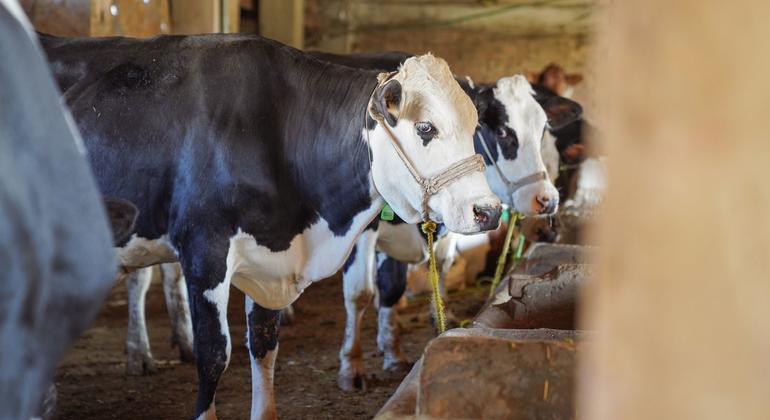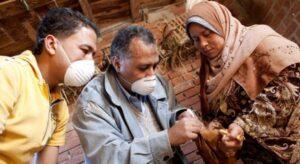The FMD is a very contagious viral disease affecting hoofes cloven animals, including cattle, pigs, sheep, goats and various wild species.
Europe is currently facing its worst epidemic so far this century at the same time as an exotic viral strain has been introduced in Iraq and other countries in the Middle East.
Concern for potential propagation
“”FAO recommends urgent biosecurity measures and improved monitoring Following the recent detection of the serotype of feet and mouth disease (FMD) SAT1 in Iraq and Bahrain, “said the agency in aalert.
“This serotype is exotic for the regions of the Near East and the West in Eurasia,” continued the agency – which means that the tension is not normally there – which raises “serious concerns” concerning its potential propagation.
The FMD is generally characterized by fever and blisters in the mouth and on the feet of affected livestock, accompanied by lameness. Although few adult animals succumb to the disease, young people can die of sudden heart failure.
The virus spreads quickly and can affect a large number of animals, especially in countries or regions which are generally free from the disease or do not regularly use vaccination.
Although MPO is not a public health threat, it has an impact on animal health and well-being, food security and income by reducing agricultural productivity, including by a decrease in milk and meat yields.
The economic impact is also substantial, with global direct loss of production and vaccination costs in the endemic regions estimated at $ 21 billion per year. FAO noted that the real economic burden is probably much higher when disturbances in international and local trade are taken into account.
A Major epiciance in the United Kingdom in 2001 Leades to slaughter more than six million animals and cost the billions, devastating of the cattle and tourism industry. A series of new measures in response would have reduced risk and improved resilience, including local and national emergency plans for epidemics.
Epidemics and response
The FMD virus has recently been detected in certain parts of Europe normally free from disease and the continent has now experienced its worst epidemic since 2001.
Germany detected an epidemic last January but has since been declared without DME, but subsequent epidemics Hungary and Slovakia persisted.
In response, the UNITED KINGDOM recently announced that it had prohibited imports of meat or dairy products from European countries where the virus has been detected, as well as Austria Due to the epidemic in neighboring Hungary.
The FMD is endemic in the Middle East, but the recent resurgence is due to an exotic serotype probably introduced from East Africa. Cases have been reported in Bahrain, Iraq and Kuwait, although other countries are at high risk.
Many strains of the FMD virus continue to circulate in different parts of the world, and the recent epidemics in Europe and in the Near East highlight the continuous risk that the disease presents to means of subsistence, food security and safe trade, FAO said.
Awareness
Although all governments are invited to be vigilant, the agency has declared that affected countries and that high -risk countries should consider measures to raise awareness between farmers and communities to protect livestock.
Other recommendations include biosecurity measures such as separation from sick animals from other cattle and have them examined by professionals, as well as verification of vaccination files and the verification of FMD emergency plans.
The FAO said that by implementing these measures, countries can considerably reduce risks.




